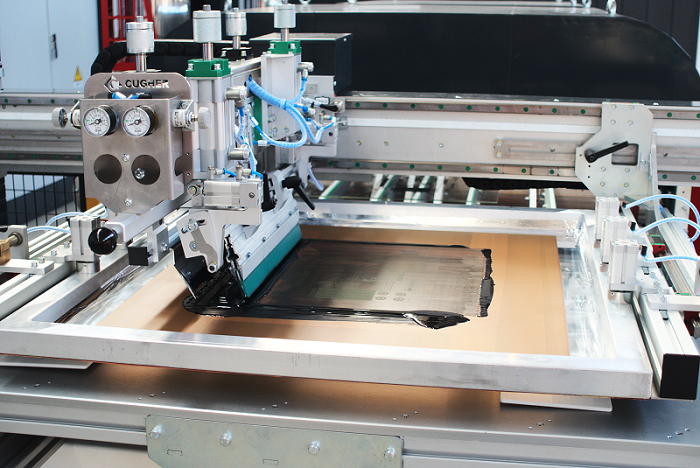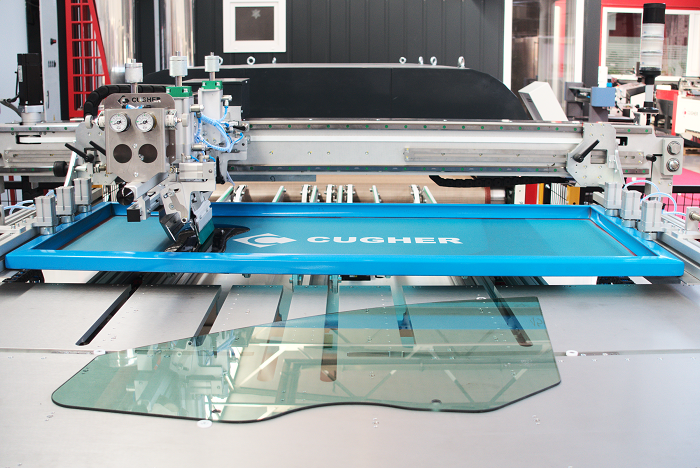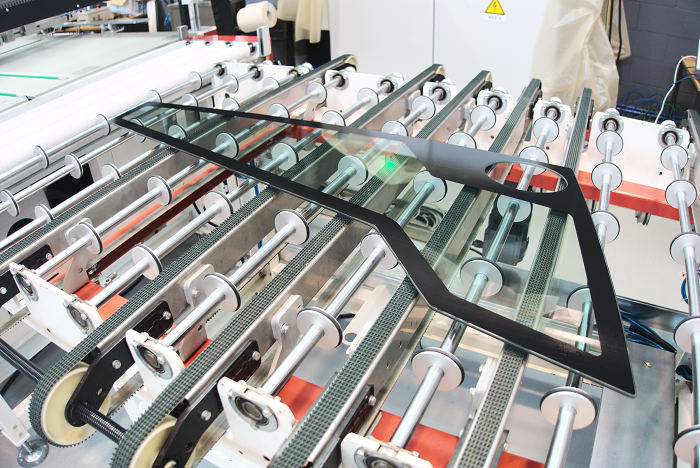In synch with ongoing technological advances, digitalisation has also entered the extensive field of glass printing. Indeed, digital printing machines attract considerable interest from various sector operators among companies that mainly decorate glass – often in unique and multicoloured copies. However, digital printing machines are not entirely comparable with classic screen printing machines.

The impact of technology
The first printing machine was designed in the early 1990s by Benny Landa, whose concept revolutionized the paper printing industry. Glass printing technology, on the other hand, is a much more recent step and is still ‘in progress’ when facing printing challenges upon a completely waterproof surface.
Not unlike other new technologies -those still under development in particular- some uncertainty remains as to whether they actually represent an effective solution by which all answers can be found to all the problems that arise during their implementation.
Considering the research for solutions to problems that this technology entails, some established digital printing machine manufacturers have abandoned all development of technologies for digital printing on glass – after years of R&D.
Here, an especially critical aspect of digital printing on glass is undoubtedly represented by the use of a suitable printing ink, as confirmed by the union of ink manufacturing companies with digital printing ones.
Here the challenge is to develop inks validated by various glass processing companies, whether they operate in the Home Appliances, Automotive or Architecture sectors – all of which have very stringent technical specifications regarding inks. Also, research can hardly ignore ink containment costs, which are significantly higher nowadays in comparison with screen printing ink.

Operational and maintenance considerations
As often happens with new technologies, digital glass printing also requires new skills from operators to achieve optimum machine use. These skills are not commonplace and, as such, require specific operator training in digital graphics.
Conversely, for screen printing -a widespread, consolidated technology in many industrial sectors- one will easily find trained operators capable of making the best use of printing machines, even those offering top-notch solutions – all with very high-level automation systems that are sophisticated and able to satisfy any customer need.
Still, the maintenance aspect of a printing machine, too, can hardly be underestimated here.
Screen printing machines, even the most sophisticated, are comprised of well-known mechanical and electronic elements which are easily available. Therefore, maintenance demands no special skills and has a negligible average annual cost – in the order of a few thousand Euros (and here we’re talking machines that run continuously for 24 hours a day, 7 days a week and even 350 days a year).
For the maintenance of a digital printing machine, on the other hand, it should be considered that many key components are supplied only by the manufacturer of the specific machine itself, much like inks that are used on the machine – which all generates dependence upon the manufacturer.

Weighing pros and cons
Undoubtedly, digital printing has its major advantages, allowing for the creation of colour prints in a single pass while being free of printing frames – which excludes the need to keep frames within the warehouse.
Multicoloured printing definitely has great appeal within the architectural field. Here, the fact that unique pieces can be made without any frame creation is undeniably among the great plusses.
However, digital technology betrays certain limitations too, given that a high printing accuracy is necessitated (i.e. print position relative to glass edges). In fact, many digital printing machines have a printing precision that falls short of the consolidated repeatability of 0.08 mm of Cugher’s screen printing machines.
Coupled with the aforementioned factors, all this contributes towards limiting the application field of digital printing machines.
When we focus upon productivity, it must be recognized that the advent of “Single Pass” digital printing machines offers an output that closely approximates that of screen printing machines, only with a higher economic outlay.
“Multi Pass” technology represents an economic solution, though the productivity it offers remains incomparable with screen printing. Not only. The fact that it’s volume-based already renders it a poor option for industrial production. For instance, a digital Multi Pass might find acceptable application in the architectural sector where the production of a few glasses per hour poses no problem. That said, it would realistically be excluded for Home Appliance or Automotive applications where cycle times are typically so determinative.
In sum, choosing screen printing effectively means opting for a process that’s characteristally:
- Consolidated
- Reliable
- Straightforward
- Attractively-priced
- Independent of the ink manufacturer
- Independent of ink type (UV, IR, water-based, silicone-based, solvent-based, electro-conductive, etc.)
- High-performing
- Accurate
- Certified
- Durable
- Competitive
